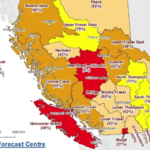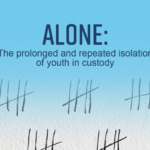GUEST OPINION: The Proposed STV System
By Andre Carrel
The question we need to ask before we talk about electoral systems is this: Why do we need government? The answer is that human activity is organized through institutions that facilitate long-term cooperation, starting at the level of the family and spiralling into ever larger circles. Governments are institutions created to facilitate cooperation and mutual support in the pursuit of common objectives.
There are many forms of government, including autocracies, plutocracies, aristocracies and oligarchies. Such governments share a common purpose: They serve the interests of a minority. Democracy is the only form of government whose objective is to serve the interests not of a minority, not of the majority, but of all the people. How must government be structured so as to serve all the people? Jean-Jacques Rousseau conceded in 1762 that it is not possible for all the people to meet all the time to make all the decisions necessary to govern. Even in a democracy where government is supposed to be of the people, by the people, and for the people, as Abraham Lincoln defined the system in 1863, society needs to find a way to delegate the responsibility to govern and to ensure the will of the people is reflected in government decisions. Elections are the mechanism for achieving this delegation.
Why do we not simply elect a leader for a fixed term and let that leader govern on our behalf? Why do we bother with an assembly since it seems that the politicians we elect to represent us have to obey their party’s leader anyway? Assemblies are costly and cumbersome. But democracy, like justice, is not cheap because not only must it be done, it must be seen to be done. Democracy is alive when people see their political views, ideas, beliefs, and the multitude of their priorities, and things they want done being debated and considered in an open forum. An open debate of diverse ideas helps to prevent the domination of government decisions by the narrow self-interest of one segment of society. A healthy democracy is rooted in compromises that enable a diversified society to find common cause.
We must never forget that it is the people – all of the people – who live with the social, environmental, cultural, and economic consequences of government decisions. No individual and no political party can claim to know what is best for all the people in all subjects under all circumstances. Citizens of a democracy should expect their political views, beliefs, priorities, and concerns — in other words, their political ideas — to be considered extensively, debated vigorously, and taken into account when governments make their decisions. That is the purpose of a legislature in a democracy; that is why we elect assemblies rather than leaders.
* * *
The Community Charter allows municipalities to choose the size of council. In addition to a mayor, councils can have from four to ten councillors. The Local Government Act allows municipalities to establish neighbourhood constituencies, commonly referred to as wards. Not a single municipality in British Columbia has adopted the neighbourhood constituency option. From the smallest village to the largest city, we all vote for our municipal councils as a whole. In every municipality voters pick and chose the people they believe will best represent their overall views and overall interests.
Voters do not have to vote for a full slate. If a municipal council has six councillors, citizens may vote for from one to six candidates, as they wish. The six candidates with the most votes are declared elected. It does not matter which of these six elected candidates ends up with the most or the fewest votes. Once elected, all councillors are equal in every respect. They have equal rights to speak in council debates; they are equally responsible and accountable, and their votes have equal weight. Municipal councillors elected at large do not represent the narrow interests of one neighbourhood. Every councillor we elect represents every neighbourhood and every citizen. The concept of being represented by more than one elected politician is not new to us at all, nor is the practice of voting for more than one candidate at election time.
The single transferable vote system, STV, is a system that allows electors to vote for more than one candidate and that provides for constituencies represented by more than one elected politician. The system was designed to minimize wasted votes and to give voters the choice of casting their votes for political parties through their candidates, or for specific candidates without regard to their party affiliations.
The way a ballot is marked under STV differs in two features from the way a ballot is marked in a municipal election. In municipal elections we mark our choices with an X or a check mark. All our choices have equal weight in the count. We are allowed to vote for as few or as many candidates as we want, up to the maximum number of seats on the council. A ballot marked with more than the maximum number of seats is rejected as a spoiled ballot.
In a provincial election under STV, a ballot marked with an X or a check mark would be rejected as a spoiled ballot. Voters indicate their choices by ranking candidates in order of preference — number 1, number 2, number 3 — instead of simply checking them off. STV allows voters to support only one candidate or to rank all candidates on the ballot according to preference.
The first past the post system we are accustomed to at the provincial and federal levels is a plurality voting system. That system’s advantage is that it is easy to count the votes and determine the winner: whoever receives the most votes wins. The plurality voting system is more likely than any proportional representation system to produce election results where candidates representing one party form a majority in the legislature. The majority elected under FPTP rarely represents the majority of the electorate; more often than not it represents only the plurality, in other words the largest minority. Such an assembly falls short of democracy’s principles because it tempts governments to serve the interests of a minority.
The challenge for a candidate in an FPTP election is to get more votes than any of the other candidates in the constituency. It does not matter how many votes a candidate gets; what matters is getting more votes than any other candidate. With only two candidates on an FPTP ballot, a candidate needs 50 percent plus one vote to win. However, the more candidates there are under FPTP, the fewer the votes needed to get elected. The more evenly the votes are distributed among candidates, the fewer the votes needed to get elected. If we want to be certain that the winning candidate in an FPTP election has the support of the majority, we must limit the election to two candidates. The French, who also use the FPTP system, do that by holding a second round election with the two top candidates from the first round vote if no candidate receives an absolute majority in the first round.
* * *
The vote count in an STV election is more complicated than in an FPTP election. However, more important than the technicalities of counting ballots after the polls are closed is what an election produces. What is the difference between an FPTP and an STV legislature?
The legislature deals with health, education, transportation, environment, law enforcement, forestry, labour, finance, justice, tourism, economic development, natural resources, taxation, and more. Let us assume for a moment that because of my age, health is more important to me than anything else. But health is not my only concern. I have a four-year old grandson, whom I love very much. Because of him I attach great importance to my government’s policies on education and the environment. I look at the list of political parties and their candidates, and I evaluate their policies. I like the health policies promoted by party A. As for the issues that will affect my grandson’s future, I prefer the educational policies of party B and the environmental policies of party C. That leaves me with a dilemma in an FPTP electoral system: Which party do I vote for? Do I vote for the health policy that is so important to me, or do I vote for the educational or environmental policies that are important to my grandson’s future? The effect of voting for the party whose health policies I support is that I also support that party’s educational and environmental policies, which I do not agree with. If I vote for a party whose educational or environmental policies I support, I would also be supporting the party’s health policies. FPTP offers only one choice to voters: winner-take-all — take-it-or-leave-it.
How would STV change that? The option to vote for more than one party and be represented by more than one politician allows me to vote for every party that proposes a policy I want to support. I will have to rank my preferences on the ballot, but I will not have to make an either/or choice. An STV election results in an assembly whose political division mirrors the voting population’s political division. If the people endorse three parties in a 40-40-20 split, STV will result in a 40-40-20 political division in the legislature. Voting alone, however, will not indicate to the parties I voted for which of their policies I support and which I do not. That is why elections alone do not beget democracy.
* * *
The first achievement of STV would be the end of farcical majority governments elected with 40 percent of the vote while the voters who make up the other 60 percent are relegated to the opposition solely because they are not organized in a single party. Under STV, political parties will have to learn to work together, to cooperate, and to compromise. No longer will one political party be able to dominate the legislative agenda and unilaterally define the government’s policy direction and emphasis across the entire public policy spectrum. The term “coalition” has been unfairly tarnished; a coalition is the foundation of this country. A federation is by definition a coalition, an alliance of diverse people working together in the pursuit of common objectives.
Now let’s go back to our 40-40-20 STV election result. There are three parties in the legislature and none commands enough votes to unilaterally control the agenda and the legislative program. Elections no longer hold out a chance of winning majority control in the legislature. The parties elected will have to debate the merits of their respective health, educational, and environmental policies. Every party will eventually have to listen to what other parties are proposing. Every party will have to look at its own policies and determine what aspects of its policies it may be willing to amend, expand, modify, or drop to make its policies acceptable to at least one other political party and thereby create a working majority in the legislature. As a consequence of this process the government will not be able to adopt a health policy along the lines party A would have preferred. The government’s educational and environmental policies will fall short of what parties B and C had proposed during the election. Not only political parties, citizens too will have to accept compromises. The benefit of compromises is that we can look forward to a range of government policies that, while not being what we had hoped for individually, will in their overall effect be superior to what we would have had if one party had the power to impose its ideology on all policies and on all of us. Things will not be perfect, but when we evaluate how compromise policies on health, education, environment, and other areas negotiated by the political parties we have elected to the legislature affect us, our families, and our neighbours, we will find that, as a package, compromise policies serve society better than the kind winner-take-all take-it-or-leave-it policies we have been getting from FPTP majority legislatures.
The will of the majority is not the substance of democratic governance. In 1835 Alexis de Tocqueville argued that the tyranny of the majority promotes mediocrity, legislative and administrative instability, and a general atmosphere of unpredictability. Tocqueville could have been writing about present-day politics in British Columbia and Canada.
* * *
How would STV affect election campaigns? Politics will still be politics; tempers will still flare, and bad habits will not vanish. But in time with STV, political parties and their candidates will learn that majority control in the legislature and power are no longer prizes to be won in an election. It will no longer suffice to promise electors more goodies at lower taxes while telling voters that the other parties are made up of idiots. In time, political parties and their candidates will learn that they can improve electoral support by putting more emphasis on the attributes of their ideas and policies and less emphasis on the personalities and shortcomings of their adversaries.
Voters too will need time to get used to STV. Voters will still be able to vote strictly along party lines, but this will no longer be their only option. Voters will no longer be limited to putting one election egg into one basket. I will be able to vote for the candidate whose party’s health policies offer what I want as I approach old age, and at the same time I will be able to vote for the candidates whose educational and environmental policies offer what I think is best for my grandson. Even if my riding has only two MLAs, I will be able to cast three votes in support of parties who advocate policies I agree with. I will not know which two candidates will be elected until after the vote count, but I will be able to rest assured that all three votes I cast will be counted and that they will be reflected in the makeup of the legislature. My responsibility as a voter will be to prioritize my interests, but I will no longer have to pick one priority and abandon all others. STV will allow me to set my own priorities and to vote accordingly.
* * *
What motivates people to run as candidates in an election? Some people have a passion about politics. Some candidates know full well that they have no chance at all of getting elected under the FPTP system. Some candidates do not run to win; they run to place their issue on the election agenda. Such candidates run to raise the profile of their issue and to introduce voters to their vision of what government should be doing. Thus we find some constituencies with three, four, and sometimes more candidates competing for a single seat. Multiple candidates divide the vote, thereby lowering the number of votes required to win the election. The more parties in the contest and the more balanced their voter support, the fewer the votes needed under FPTP for one party to be able to lay claim to speaking on behalf of “the majority.” Elections with multiple candidates favour established parties who can offer strong financial and research support to their candidates. The quid pro quo for a candidate running under the banner of an established party is the requirement to conform to the party line. Established parties hold a candidate on a short leash to prevent party election strategies from being undermined. If a candidate succeeds in tripping up an opponent who strays from the party line, that poor sod will be hounded without mercy for being inconsistent and unreliable.
It is far easier to denigrate other parties and their candidates than it is to convince voters that all your policies in all areas of governance — health, education, labour, environment, and so on — are superior to all policies on all subjects advanced by all opposing parties. How could a party convince a majority of voters that its policies on everything from soup to nuts are superior to all policies of the other parties? How much easier it is for a party to raise doubts about the motives and trustworthiness of other parties by referring to their history and to the personal lives of their leaders and candidates. How much easier it is to take comments made by other parties and their candidates ten days, ten months, or ten years ago out of context and hold up such comments as proof that these parties and their candidates cannot be trusted and that they are therefore not fit to govern.
The FPTP electoral system was a good system in the 19th century when the philosophies of the Age of Enlightenment were first applied to governance. But governments have expanded their role into service and policy areas that could not have been imagined in a politician’s wildest dreams at the time of the American or French Revolutions, or at the time of Canadian Confederation.
British Columbia is a complex society socially, economically, culturally, and historically more so than geographically. The complexities of governing today are such that it is unrealistic to expect one ideology to have all the right answers to all problems. In today’s politics the strongest attribute of the FPTP electoral system is that it lends itself to negativity and personal attacks like no other system. FPTP raises the noise, and lowers the quality of political discourse to the level of a street fight.
Far too many people are nauseated by politics as practised in Ottawa and Victoria, sickened by electoral campaigns reduced to vitriol and name-calling. Far too many resources are wasted and opportunities are missed by slight shifts in popular support for the leading parties. As little as a two point shift in voter support one way or the other can result in a radical change of direction in public policy, the creation of new programs and the cancellation of others, policy shifts totally out of proportion to the change in public mood.
Far too many people, disappointed by ideologically driven governance, have given up on the process altogether. When citizens give up on politics, they give up on democracy. How will society be governed, and how will government be held accountable when too many citizens have abandoned democracy? Citizens of a democracy have a responsibility, a duty to nurture the democratic ethic if their society is to deal not only effectively, but also democratically with today’s complex issues linked to demography, the environment, and economic globalization. The FPTP electoral system served us well as we emerged from colonial status, but its time has passed, and it no longer contributes to the democratic ethic. To the contrary, FPTP deprives democracy of oxygen.
STV is not a cure-all for whatever ails politics in British Columbia, and it is not without drawbacks and potential problems. STV does have the potential to fractionalize the legislature. We could end up with four, five, or more parties in the legislature, paralyzing government as a result of the parties’ inability or unwillingness to cooperate and compromise in the interest of the public good. But STV allows for nuances to fine-tune the system to our unique political DNA. On the other hand, we remember 2001 when our FPTP system in British Columbia converted a 57.6 percent voter support into a crushing majority of 97.5 percent in the legislature. And that is not the worst example of FPTP excess. In the 1987 New Brunswick provincial election, FPTP converted a 60.4 percent voter support into a 100 percent majority in the legislature! This kind of lopsided result is not possible with STV.
* * *
STV is not new; it is the oldest system of proportional representation. STV has been around for over 150 years, but it is not the only system developed to mirror the citizenry’s politics in a legislature. Mixed member and party-list proportional systems are examples of other proportional representation systems. No system can claim to be the best, and we cannot assume that because one system works well in one jurisdiction it would therefore work just as well here in British Columbia. Nor can we assume that problems encountered elsewhere with a particular proportional representation system would inevitably occur here too if we were to adopt that system.
Every jurisdiction has its own political DNA, and that DNA influences the performance of whatever voting system is used. Some will point to Israel’s proportional representation system and the problems that country seems to have in trying to form a government after every election. Israel uses a party list system. Switzerland and Sweden use party list systems too, and one would be hard-pressed to find examples of greater political stability than what these two countries have experienced over the past 50 years. Italy is not a shining example of a stable democracy; it uses a mixed member proportional system. Germany, on the other hand, has been served rather well by its mixed member proportional system. The Republic of Ireland has been using STV since 1919, and it has achieved a record of stable governments with that system. I don’t want this to be taken as an insult, but if the Irish can live and succeed with STV, surely British Columbians can too!
* * *
I want to add a few comments on one final point for you to consider. It concerns the increase in the size of constituencies under STV. Northern and Interior constituencies already cover enormous areas; that is a concern for some voters. How will increasing constituency size affect representation? I urge those who are concerned about enlarged constituencies to keep in mind that we have more than geographic divisions in this province. We have an urban/rural divide, a youth/senior divide, a labour/management divide, an employee/self-employed divide, and many more social, economic, and cultural divides in this province. Economic and cultural divides are often more profound than our geographic divides. True, the Kootenays are not the Peace, and the Okanagan is not the North Coast. However, when we look at the impact government policies have on our daily lives in matters such as health care, education, justice, environment, and taxation, we are faced with divisions that are more philosophical than geographic. Those voters in the Northwest who support comprehensive day care programs and affordable housing have more in common with people in the Fraser Valley who support these same policy objectives than they do with other voters in the Northwest who would rather see the role of government reduced, taxes cut, and public services privatized.
* * *
In closing, the question in the forthcoming referendum is not which of the two systems, STV or FPTP, is perfect. The question is whether the time has come to adopt an electoral system that will produce a legislature that reflects British Columbia’s political kaleidoscope. I don’t care which political party claims to be the winner after the next provincial election; I care that my political views will some day soon contribute to the shaping of public policy in this province. This is why I will be voting for STV on May 12, 2009.























